Film director Hou Hsiao-hsien (侯孝賢) shaved his head to show support for residents of the Sanying Aboriginal Community (三鶯部落) who staged a demonstration yesterday to protest a Taipei County Government plan to demolish the community.
“Aborigines have been living on this island long before the migrants from China moved here,” Hou said after shaving his head on Ketagalan Boulevard in front of the Presidential Office as Sanying residents and supporters protested. “The Aboriginal way of life should be respected.”
Besides Hou, Aboriginal actors Ma Chih-hsiang (馬志翔) and Suming, as well as writer Chu Tien-hsin (朱天心) attended the protest.
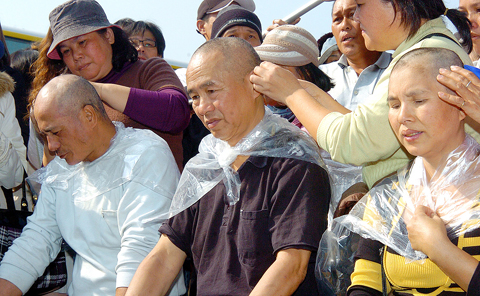
PHOTO: CHANG CHIA-MING, TAIPEI TIMES
“It took Sanying inhabitants a lot of effort to rebuild their homes after they were destroyed, but as soon as next Monday, the community might be destroyed again,” Sanying Self-Help Group spokesman Chiang Yi-hao (江一豪) told reporters and demonstrators.
Sanying is located on a bank of the Dahan River (大漢溪) in Taipei County near the Sanying Bridge (三鶯大橋), which connects Sansia (三峽) and Yingge (鶯歌) townships.
Inhabitants in the community are mostly Amis Aborigines from Hualien and Taitung counties, working in Taipei as construction workers. They could not afford housing in the city, so they built their homes on a piece of abandoned land along the river around 20 years ago.
Saying that the area was classified as a “flood zone” that could not be inhabited, the county government has torn down the community several times — most recently in February — but residents rebuild their homes each time.
Although the county government has built an apartment complex to house Sanying residents, problems remain — some of the residents refuse to move, some cannot afford the rent, while others are nots qualified to move into the apartment complex since they did not live in Sanying when the government took a census in 1994.
As successive rounds of talks between residents and the government failed to generate a consensus, the county government posted a notice on Monday warning it would evict them within seven days, adding that they would be removed with force.
Lee Tsung-kwei (李宗桂), county Information Office director-general, appeared at the demonstration, explaining to reporters that the county government was acting according to law, and was trying hard to accommodate Sanying residents.
“This area has been classified as a flood zone and no one has been allowed to live in flood zones since the Water Conservation Law [水利法] came into effect in 1994,” Lee said. “We understand that many people have lived there since long ago, so we’ve built an apartment complex to accommodate them.”
When asked how the county government would help those who could not afford the rent, Lee said he would have to find out, adding “perhaps they can get help from the Social Welfare Bureau.”
Following a meeting held later yesterday, Lee said the county government has decided to postpon the decision on whether or to enforce the eviction till after the Lunar New Year holidays. This year’s Lunar New Year falls on Jan. 26.
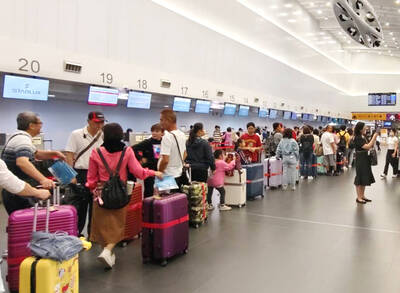
Three Taiwanese airlines have prohibited passengers from packing Bluetooth earbuds and their charger cases in checked luggage. EVA Air and Uni Air said that Bluetooth earbuds and charger cases are categorized as portable electronic devices, which should be switched off if they are placed in checked luggage based on international aviation safety regulations. They must not be in standby or sleep mode. However, as charging would continue when earbuds are placed in the charger cases, which would contravene international aviation regulations, their cases must be carried as hand luggage, they said. Tigerair Taiwan said that earbud charger cases are equipped
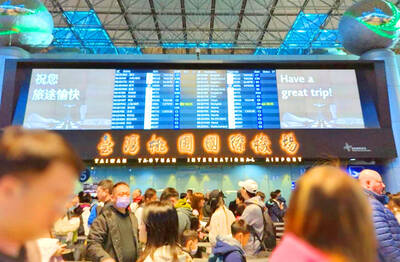
Foreign travelers entering Taiwan on a short layover via Taiwan Taoyuan International Airport are receiving NT$600 gift vouchers from yesterday, the Tourism Administration said, adding that it hopes the incentive would boost tourism consumption at the airport. The program, which allows travelers holding non-Taiwan passports who enter the country during a layover of up to 24 hours to claim a voucher, aims to promote attractions at the airport, the agency said in a statement on Friday. To participate, travelers must sign up on the campaign Web site, the agency said. They can then present their passport and boarding pass for their connecting international
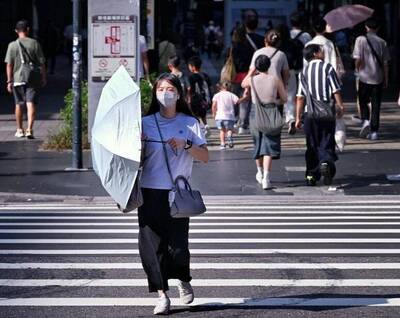
Taiwan sweltered through its hottest October on record, the Central Weather Administration (CWA) said yesterday, the latest in a string of global temperature records. The main island endured its highest average temperature since 1950, CWA forecaster Liu Pei-teng said. Temperatures the world over have soared in recent years as human-induced climate change contributes to ever more erratic weather patterns. Taiwan’s average temperature was 27.381°C as of Thursday, Liu said. Liu said the average could slip 0.1°C by the end of yesterday, but it would still be higher than the previous record of 27.009°C in 2016. "The temperature only started lowering around Oct. 18 or 19
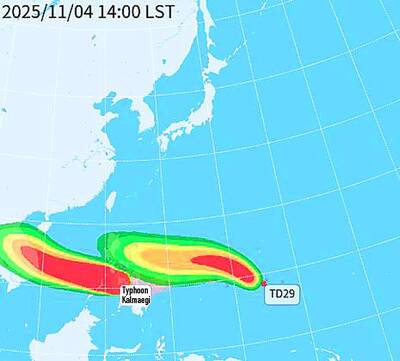
WEATHER Typhoon forming: CWA A tropical depression is expected to form into a typhoon as early as today, the Central Weather Administration (CWA) said yesterday, adding that the storm’s path remains uncertain. Before the weekend, it would move toward the Philippines, the agency said. Some time around Monday next week, it might reach a turning point, either veering north toward waters east of Taiwan or continuing westward across the Philippines, the CWA said. Meanwhile, the eye of Typhoon Kalmaegi was 1,310km south-southeast of Oluanpi (鵝鑾鼻), Taiwan’s southernmost point, as of 2am yesterday, it said. The storm is forecast to move through central